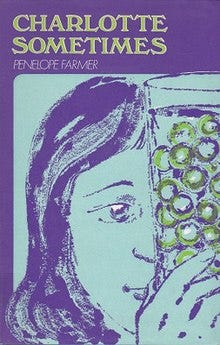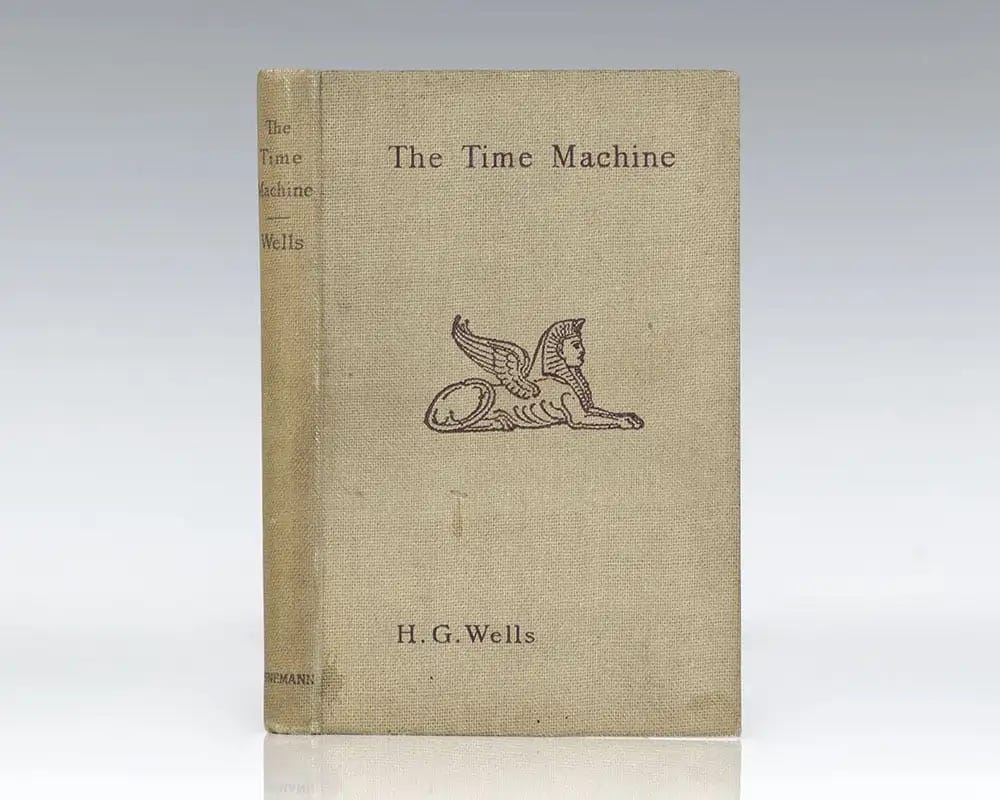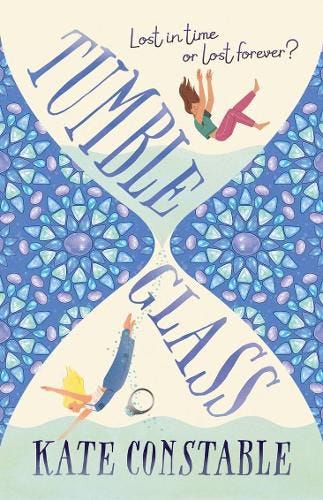A moving episode of the ABC podcast Conversations hosted by Sarah Kanowski, with guest author Heather Rose, begins:
...according to modern physics, all that we see and know of in our universe – that’s everything from mosquitos to distant planets, from the monuments of human history to your kitchen sink – all of that accounts for about five per cent of what’s actually there. The other ninety-five per cent is what scientists call dark energy, and dark matter, and we don’t really know what it is, but it’s there, all around us and all through us, this vast mystery.
Choosing the episode by chance this morning, a few minutes after I’d reached the end of Wrong Place Wrong Time by Gillian McAllister — a crime novel in which a woman is inexplicably sent hurtling backwards through her life — I thought, thank you, Universe, for sending me this quote, because today I want to talk about novels for children and adults that refuse the narrow rules of time.
The force that compelled me to read Wrong Place Wrong Time has been working its socks off since I was eleven: my predilection for time-slips. I’ve never read Gillian McAllister and I don’t read much crime but I impulse-bought the book and moved it to the top of my pile for that reason alone. In this story, a mother, Jen, witnesses her teenage son murder a man. While he’s arrested, she goes into a state of extreme shock: clawing at her eighteen-year bank of parenting memories for information about how her only child became a killer. The next morning it dawns on her (rapidly, for this is a tale that rarely dawdles) that she is not in ‘tomorrow’ after all, she’s now in ‘yesterday’. The murder hasn’t happened. This backwards motion continues as Jen slips into her past self and essentially takes over: sometimes she slips a day, or a week, eventually she slips by years. All the while Jen is trying to work out the how and why.
Time-slips often start out with a main character who already feels displaced. By whimsical device, memory-based illusion, or other psychological phenomenon, they become truly out of place by going to another time, or times, and there the reckoning with their own existence makes progress (sometimes while they are living someone else’s life). Eventually they find their way back home – that is, the correct time and state of mind – and are left with a powerful secret.
Although Wrong Place Wrong Time is plot- rather than character-driven, the main character is in her forties, has recently suffered the loss of her father and is conscious of a certain distance in her relationship with her almost-adult son: a new wrestling with her role in his life. In that sense she makes a fair candidate for slipping through time.
Let’s rewind to 1981.

I was six years old in 1981. The first DeLorean rolled off the production line and double denim was cool. That’s also the year The Cure released a song based on a novel that what would shortly become my favourite: Charlotte Sometimes by Penelope Farmer. Evidently this novel got to Robert Smith. He said:
There have been a lot of literary influences through the years; 'Charlotte Sometimes' was a very straight lift.
It’s no lie. Here are a couple of examples of that ‘straight lift’. By bedtime all the faces, the voices, had blurred for Charlotte to one face, one voice is the novel’s opening line, which appears thus in the song lyrics: All the faces / All the voices blur / Change to one face / Change to one voice. Or how about She prepared herself for bed . . . The light seemed too bright for them, glaring on white walls in the novel, which becomes in the song Prepare yourself for bed / The light seems bright / And glares on white walls.
Charlotte Sometimes, published in 1969, remains in print and is widely known as a classic (though I still say it deserves more attention). The central character, Charlotte, arrives at boarding school in 1958. She doesn’t know anyone; nothing is familiar. So already she’s out of sorts. She goes to bed that night and on waking she notes that the view from the window is slightly different. People are calling her Clare. It’s 1918.
Charlotte Sometimes is a sophisticated, layered story about identity more than it is an examination of the “science” of time. Charlotte and Clare swap places by means of an old bed. Nothing is over-explained; it’s a beautiful work of literature.
In the plot-driven Wrong Place Wrong Time it’s a case of story over style. The writing works best when it’s plain, here and there weakened by literary devices, but I’d recommend it to anyone wanting a well-paced, compelling experience. Although the central character, Jen, consults a scientist who specialises in time-loops, and dwells on the forces that have catapulted her soul back and back again, efforts to explain the device are not as heavy-handed as they could be and turn out to be a bit of fun. Wrong Place Wrong Time is playful, rather like a children’s book (to clarify, I mean that as a compliment). The genius of the novel is in the watertight structure and clever unfolding of the truth. Even in moments when I thought I was finally one step ahead, this reader was happily out-manoeuvred by a masterful storyteller. What it lacks in richness it makes up for in intrigue.
I only know from my friendship with author Nova Weetman how challenging it is to write a “backwards” story: she did it brilliantly in the YA novel Everything Is Changed but confided that the process was mind-bending. While Wrong Place Wrong Time allows the central character to try to stop the crime from happening by retracing her steps, Everything Is Changed keeps its characters’ feet firmly on the ground but cleverly examines cause-and-effect with a back-to-front narrative.
Let’s slip back again, to 1970.
I’ll point diehard time-slip fans to Timeslip, a British TV series that aired in 1970 about two kids who find a time barrier. There they are above: finding it, soon to push through it with their bare hands rather gleefully. The production looks painfully clunky to us now, of course, but were it written by a confident author it could work.
For me, the most successful slips are the ones with the least amount of fuss. The non-technical ones. When everything else in the story is recognisably real, the way you transport your main characters matters. For many writers this means avoiding awkward, drawn-out explanations about how the natural order of the world (as we know it) is being defied. Unless you have the skill and confidence to reinvent the known universe (and more power to you if you do), a good rule of thumb is to keep it simple.
Study how the pros do it (that is: children’s authors).
In Tom’s Midnight Garden, Tom is away from home and miserable. One night when he’s awake well after midnight, the grandfather clock strikes once and Tom assumes it’s one o’clock in the morning. Then it strikes again, and again, and again, until it has chimed thirteen times. We understand that time is no longer stable. Something extraordinary has happened, proven when Tom walks into the garden.
Children’s authors have used moondials, lockets, doors, ancient rocks, tunnels, music, clothing, genetics, and continue to find new devices or to rely on trusted ones to transport the reader. As much as we may sweat over how to successfully keep the reader’s trust and hold them firmly in the story, a well-written and simple device works.
In our co-written novel Elsewhere Girls, about two swimmers, Nova Weetman and I certainly fretted over “how to do it” but ultimately didn’t feel the need to reach for anything more complicated than a stopwatch. In our next timeslip, which we’ve just finished writing, we decided to push ourselves and use . . . hang on, that’s top secret, sorry.
“The past is never dead. It is not even past.” William Faulkner
Come with me to 1895.
I’m not the sort of thinker or writer who wonders that much about the distant future; I’m usually looking back. That said I’m filled with admiration for those who can think far ahead.
H.G. Wells’ The Time Machine is the earliest example of a time-travel novel (as opposed to the more whimsical ‘slip’). Wells was a science fiction pioneer, not only a novelist but trained as a scientist. His was a period of rapid change – the Industrial Revolution, people moving to the city, industry growing, new technologies changing the way people lived. Of course this was working out very well for some and not so well for others. The Time Machine was Wells’ way of examining his fears about society. Having grown up poor, he wanted to send a message to his contemporaries that they should not become complacent about the future. In his imagined future, the year 802,701, the well-off have become helpless and stupid while the oppressed are forced to live underground. Occasionally they eat the above-ground people.
Penultimate slip of the day: 1979.
What’s the point of time-slips that go back? Should speculative fiction only speculate about the future?
The point is that history relies on perspective. A time-slip novel with a character who hasn’t traditionally controlled the narrative is just as much of a revelation. I loved Kindred by Octavia E. Butler. In this big, brutal jump from the comparatively cosy time-slip stories of my childhood, a 20th Century black woman, twenty-six and living with her white husband in California in 1976, not so much slips but is ripped back in time to 19th Century Maryland.
The author described herself as a loner, an outsider — perhaps this is sometimes true of the authors who write time-slips as well as their characters. Octavia E. Butler was over six feet tall by the time she was a teenager and suffered bullying and isolation at school. She became a writer of science fiction in America at a time when there were very few black women being published, especially in that genre.
From a Lithub article:
Butler was inspired to write Kindred partly because she had heard so many young black Americans minimizing the horrors of slavery and claiming that if they had been enslaved, they simply wouldn’t have tolerated this or that. Such naïveté and ahistorical braggadocio upset Butler. She wanted to write a novel that showed such young people what it might feel like to become a slave: not merely to teach them the brute facts about this American institution, but to show them, on the page, teeth getting kicked out, backs being torn open from whips, white slaveholders casually attempting to rape black women, who would be savagely beaten, even killed, if they resisted, what it would be like for a reader to live in the night-day of European slavery.
What I love about time-slip stories is that they are naturally transformative. Part of the glorious tension of a time-slip, which beats just underneath the main story, is whether and how the character will get back to “normal”. In Elsewhere Girls we put the stopwatch out of reach, in Charlotte Sometimes Farmer took the transporting bed away. In Wrong Place Wrong Time the beauty is that the character is going backwards in leaps and bounds . . . the reader wonders: what happens when she runs out of the past?
Bringing you back to now.
One of the most psychologically interesting aspects of Wrong Place Wrong Time is the main character’s constant reckoning with her sense of entitlement: is she entitled to change the course of her personal history? What if she upsets something else in the process? Is she entitled to want to save herself and her own happiness while she’s propelled back to her former selves? It’s an imaginative way to wrestle with the way that women especially can write their own desires out of the picture, to make sacrifice a bad habit and to blame themselves for anything less than so-called perfect parenting.
If you are a time-slip fan seeking a brilliantly plotted read, give Wrong Place Wrong Time a try. For something richer, I loved Kate Atkinson’s Life After Life (and the TV adaptation was one of my favourite viewings of last year), and in children’s literature I’m excited to read Tumble Glass by Kate Constable, which is fresh out of the box.
Update: here are my reading notes on Tumbleglass by Kate Constable.









